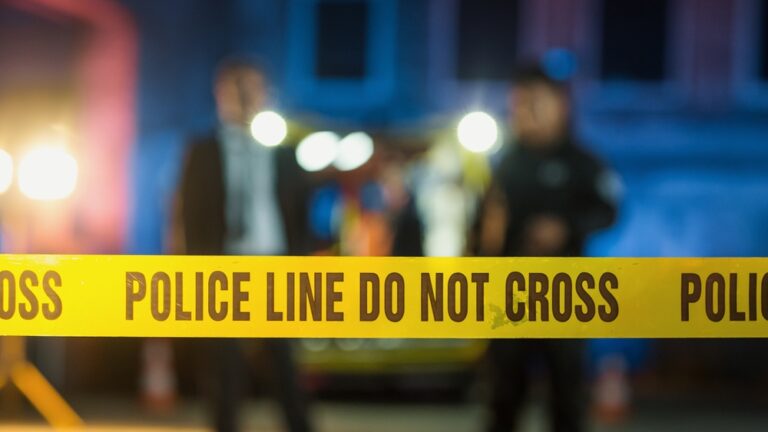
Police Tape 101: Everything You Need to Know
Police tape, commonly known as crime scene tape, is an important tool used by law enforcement to secure…
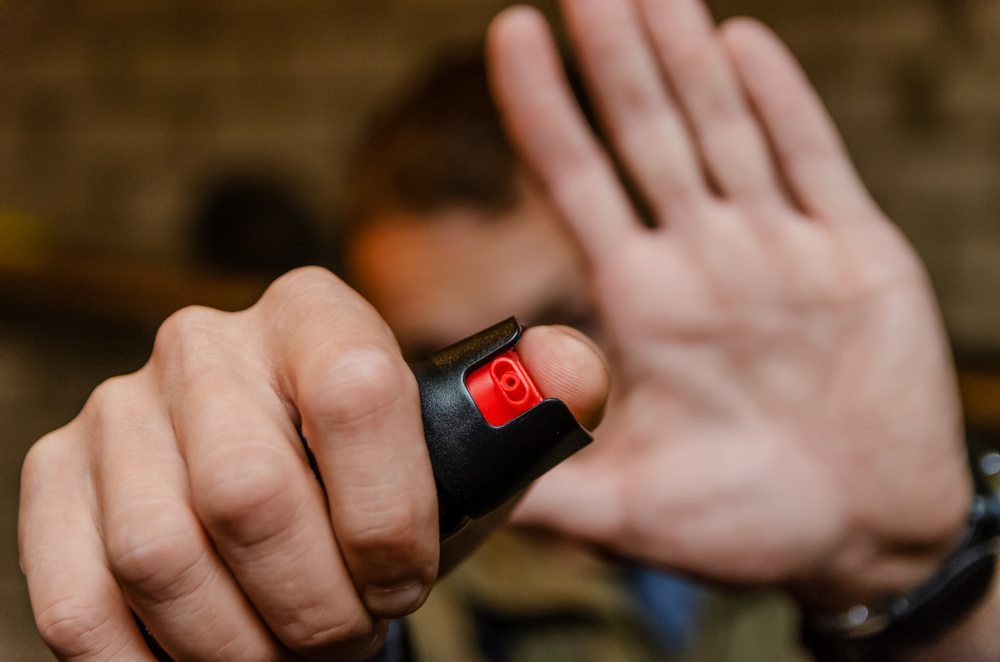
Have you ever felt the need to have an extra layer of protection while out and about? Whether it’s during a solo hike, a late-night walk home from work, or just everyday life, pepper spray can be an effective tool to help keep you safe.
But the question is, do you know how to use it properly? With so many different types of pepper spray and varying laws on its use, it can be overwhelming to know where to start. That’s where we come in!
Our comprehensive guide on how to use pepper spray will answer all your questions, from the best way to carry it to the proper technique for deployment. If you want to feel more confident and secure in any situation, read on and let us guide you through the ins and outs of using pepper spray.
In cases of self-defense: If someone is physically attacking or threatening to harm you, using pepper spray may be justified. It can provide a window of opportunity to escape or get help. However, it is important to ensure that the level of force you use is proportional to the threat you are facing. In other words, being pushed once probably does not justify the use of pepper spray as a means of protection.
In cases of animal attacks: Pepper spray can also be effective in protecting oneself from animal attacks. It can be used to deter aggressive dogs, bears, or other animals that may pose a threat to human safety. However, it is important to understand that the effectiveness of pepper spray may vary depending on the animal and the situation.
In law enforcement or security situations: Pepper spray is commonly used by law enforcement officers or security personnel as a non-lethal means of controlling violent or aggressive individuals. In these situations, it should only be used in accordance with proper training and protocols.
In non-threatening situations: Using pepper spray in non-threatening situations, such as during an argument or in a verbal confrontation, can escalate the situation unnecessarily and may result in legal consequences. It is important to reserve the use of pepper spray for situations where there is a clear and imminent threat to your safety.
In crowded areas: Using pepper spray in crowded areas can put others at risk of exposure and potentially cause panic. It is important to be aware of your surroundings and to avoid using pepper spray in situations where there is a risk of causing harm to innocent bystanders.
In enclosed spaces: Using pepper spray in enclosed spaces, such as a car or a small room, can cause the spray to linger and affect yourself or others in the area. It is important to use pepper spray in open and well-ventilated areas to avoid exposure.
Against individuals with respiratory or other health conditions: Using pepper spray on someone with respiratory or other health conditions can cause serious harm or even death. It is important to be aware of the potential risks and to avoid using pepper spray in situations where there is a risk of causing serious harm to someone with pre-existing health conditions.
Pepper spray is typically designed to be used in a single, short burst. Its effectiveness will depend on the strength of the spray, the distance from the target, and other factors, such as wind and temperature. After use, the canister may be empty or it may have enough spray left for one or two more uses.
It is important to note that the number of times pepper spray can be used will depend on the size and capacity of the canister, as well as the duration of the bursts. Some pepper spray canisters can be reloaded or refilled, while others are designed for one-time use only.
You should always follow the manufacturer’s instructions for using and storing pepper spray, and replace the canister when it is empty or past its expiration date. Using expired or defective pepper spray can reduce its effectiveness and even cause harm to the user or others.
It is imperative that you use pepper spray responsibly and only in situations where it is necessary and justified. You should also use the minimum amount necessary to incapacitate the target and aim carefully to avoid hitting innocent bystanders.
It is highly recommended that individuals who own pepper spray practice using it before possibly needing it in a real-life situation. One way to practice is by acquiring practice canisters that are filled with salt water instead of the active ingredients in pepper spray. Most reputable pepper spray manufacturers sell these practice canisters.
Practicing can help users become familiar with the product and build confidence in their ability to use it effectively. Users can learn how to aim accurately, how to properly hold the canister, and how to activate the spray. In addition, practicing can help users understand the range of the spray and how to adjust their aim in different conditions, such as wind or rain.
When practicing with real pepper spray, it is important to follow safety guidelines to prevent injury or accidental discharge. Practice in a well-ventilated area and wear eye protection and gloves to avoid exposure. It is also important to practice with a target, such as a cardboard box or foam target, to avoid hitting innocent bystanders.
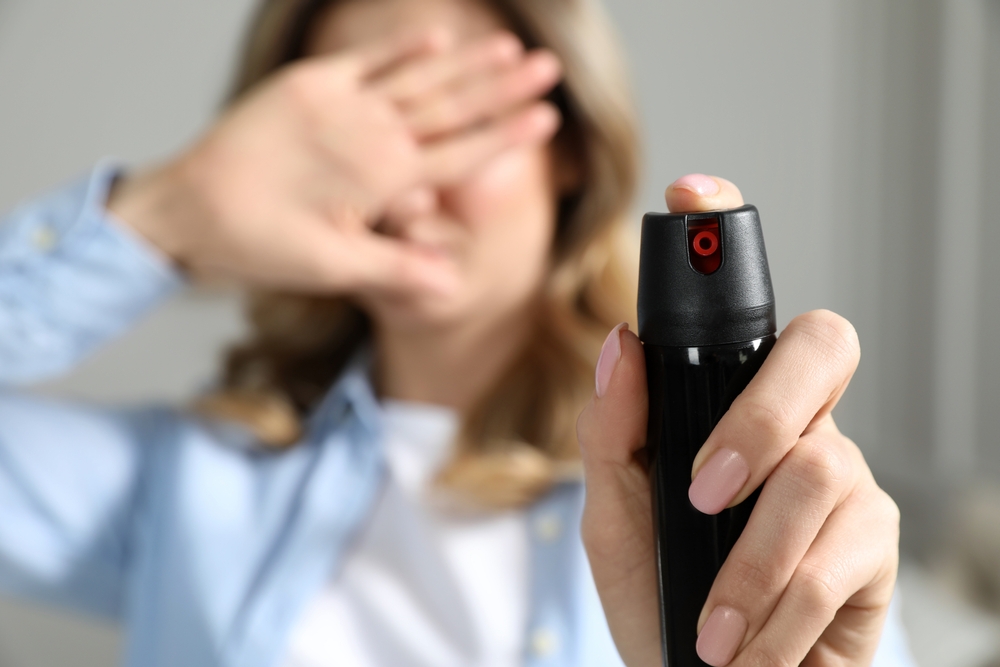
Pepper spray is designed to incapacitate an attacker, allowing the user to escape or seek help. However, you should understand that there are several factors that can impact its effectiveness. For example, some people may be less affected by pepper spray than others due to their size, strength, and physical condition. Certain medical conditions or medications may also make some individuals less sensitive to the effects of the spray. Furthermore, a person who is heavily intoxicated by alcohol or drugs might not respond to the spray.
It is important to remember that, while pepper spray is a useful self-defense tool, it is not a guaranteed solution to stopping an attacker. You should always be prepared and consider other self-defense strategies, such as running away or seeking help, in addition to using pepper spray.
There is no known data or evidence to suggest that backfiring is a common occurrence. Reputable manufacturers typically have quality control measures in place to prevent such issues, and it is recommended to periodically check the canister for any damage or defects. While there is always a risk of equipment malfunction in any product, the likelihood of a pepper spray canister failing to dispense properly is generally low when proper precautions are taken.
The biggest risk is user error, meaning the user accidentally points the nozzle toward themselves.
Whether or not you should shake pepper spray before use depends on the specific product you have purchased. Some manufacturers recommend shaking the canister to ensure that the pepper spray formula is well-mixed and ready for use. Others, however, advise against shaking the canister as it could cause air pockets to form and potentially affect the spray pattern.
To determine whether shaking your pepper spray is recommended, it is important to carefully read the manufacturer’s instructions. If the instructions do not provide clear guidance on whether to shake the canister or not, you can reach out to the manufacturer for clarification.
Deodorant is not an effective alternative to pepper spray. Although both products are packaged in similar containers, they are vastly different in composition and function. Pepper spray contains capsaicin, a compound derived from chili peppers, which irritates the eyes, nose, and throat, leading to temporary blindness, difficulty breathing, and intense pain. Deodorant, on the other hand, is designed to mask or neutralize body odor and sweat.
Using deodorant as a replacement for pepper spray can be both ineffective and dangerous. Deodorant is not designed to incapacitate an attacker and may actually escalate the situation, putting the user at greater risk of harm. It is always advisable to use products as they are intended to be used and to rely on trusted and reputable self-defense products.
While pepper spray is marketed as a self-defense tool against humans, it can also be used to fend off an aggressive dog.
However, not all types of pepper spray are safe for use against dogs. Some sprays may contain a higher concentration of capsaicin, which can lead to severe irritation or allergic reactions. Therefore, it is recommended to use pepper spray specifically formulated for use against animals or to consult with a veterinarian or animal expert for advice on safe and effective ways to handle aggressive dogs.
Using pepper spray against a dog should be a last resort and only used in situations where the dog poses an immediate threat to the safety of people or other animals.
Pepper spray is legal to use as self-defense in all 50 states of the US. However, the specific laws and regulations surrounding its use can vary by state and locality.
In general, pepper spray can only be used in situations where a person genuinely feels that their safety is at risk or they need to defend themselves from an imminent threat of harm. It is important to note that pepper spray should not be used as a means of initiating violence or aggression, as this can lead to legal repercussions.
Some states have specific restrictions on the type and size of pepper spray canisters that can be carried, as well as the concentration of the spray. In some cases, it may also be required to obtain a permit or license before carrying pepper spray.
One should also be aware of the circumstances under which the use of pepper spray may be deemed excessive or unlawful. For example, using pepper spray on an unarmed person who is not posing an immediate threat could be considered excessive force and lead to legal consequences.
Pepper spray canisters typically shoot between 8 and 12 feet. However, some models can shoot up to 20 feet. It’s essential to check the range of your pepper spray before purchasing and familiarize yourself with how far it can shoot to ensure it meets your needs.
Pepper spray is sometimes used by law enforcement for crowd control. It is a non-lethal option for dispersing crowds and can be effective in incapacitating multiple individuals at once. However, the use of pepper spray for crowd control is often controversial.
One of the main concerns with using pepper spray for crowd control is the potential for harm to innocent bystanders. If the spray is not used carefully and in a controlled manner, it can affect people who are not part of the crowd being targeted.
Another concern is the potential for escalation of violence. In some cases, the use of pepper spray can incite aggression from the targeted crowd, leading to a more violent situation.
It is important to note that the use of pepper spray for crowd control is heavily regulated and can only be used by trained law enforcement officers in specific circumstances. Additionally, some jurisdictions may have specific laws or regulations regarding the use of pepper spray for crowd control.
It is not advisable to use pepper spray against multiple attackers as the canister may not contain sufficient fluid to stop all attackers. Rather, it is crucial to prioritize the attackers based on the level of threat they pose and try to disengage from the situation as soon as possible. Attempting to use pepper spray against multiple attackers may also increase the likelihood of the user accidentally spraying themselves or innocent bystanders. It is best to have a contingency plan and consider carrying alternative forms of self-defense in case of an incident where multiple attackers are involved.
When it comes to self-defense tools, pepper spray is a popular choice due to its ease of use, portability, and effectiveness. However, pepper spray is not the only self-defense tool available on the market and it may not be the best option for every situation.
One alternative to pepper spray is a stun gun. Stun guns work by delivering a high-voltage electric shock to the attacker, causing temporary paralysis and disorientation. They are effective in close-range combat but require the user to be in direct contact with the attacker.
Read also: Pepper Spray vs Taser: What’s the Difference?
Another option is a personal alarm. These devices emit a loud noise when activated, which can draw attention and deter an attacker. However, personal alarms do not physically incapacitate an attacker and they require the user to be close to the alarm for it to be effective.
A tactical flashlight is another self-defense tool that can be used in conjunction with pepper spray or on its own. These flashlights are designed to be used as a striking tool, as well as to temporarily blind an attacker. They are lightweight and easy to carry, making them a great option for those who want additional protection.
Pepper spray has the advantage of being effective at a distance, which is important when dealing with an attacker who may be armed. It is also relatively easy to use and can be quickly deployed in a high-stress situation. However, pepper spray can be less effective against attackers who are under the influence of drugs or alcohol, and it may not be the best option for those who are not confident in their ability to aim accurately.
Ultimately, the best self-defense tool will depend on the individual’s needs and comfort level. It is important to research different options and consider factors such as effectiveness, ease of use, and portability before making a decision. It is also recommended that one receive proper training and practice with any self-defense tool to ensure that it can be used effectively in an emergency situation.
Read also: When to Use Batons, Pepper Spray, and Tasers
While pepper spray can temporarily incapacitate an attacker, it is not a guaranteed defense against a knife or gun attack.
In a knife attack situation, the pepper spray may be effective in creating a temporary distraction, but the attacker may still be able to inflict harm before becoming affected by the spray. Additionally, if the spray misses or does not hit the attacker directly, it may not have any effect on them at all.
In situations involving a gun, pepper spray would likely be ineffective as it would not incapacitate the attacker quickly enough to prevent them from using the weapon.
Ensure that the wind is not blowing directly towards you before using pepper spray. If necessary or possible, move to a location where this is no longer the case. Avoid using pepper spray in strong headwinds, as it can backfire and hit you, exacerbating the situation.
Ideally, the wind should be blowing from behind you towards the target. This will make it easier to hit the target and increase the range of the spray.
If you are experiencing side winds, it may still be possible to use the spray. However, be prepared to adjust your aim to compensate for the wind’s direction.
Glasses can obviously shield the eyes from direct hits when standing in front of a person. In this instance, try aiming for the eyebrow area instead. This will make the spray run down towards the eyes, but its effects may be somewhat delayed. You should take this into consideration before deciding whether to use pepper spray or not
When it comes to using pepper spray on someone wearing goggles, the effectiveness of the spray is likely to be reduced. Goggles can provide significant protection against pepper spray, as they cover the eyes and prevent the spray from reaching them. This means that the individual may not experience the same level of discomfort and temporary blindness that someone otherwise would.
Using pepper spray on someone wearing goggles should only be attempted as a last resort when there are no other options available. In situations where an attacker is wearing goggles, it is best to aim for other areas of the body, such as the nose, mouth, or upper body, where the spray may still have some effect.
It’s worth noting that not all goggles will provide complete protection against pepper spray. The effectiveness of goggles will depend on the type of goggles and the quality of the lenses. Cheaper goggles may not be as effective at protecting against pepper spray as higher quality models.
In any case, it’s important to remember that pepper spray is not a foolproof solution for self-defense, and there is always a risk of the spray being ineffective or having minimal impact on the attacker. You should always consider your options and have a self-defense plan in place for a variety of different scenarios.

Police tape, commonly known as crime scene tape, is an important tool used by law enforcement to secure…
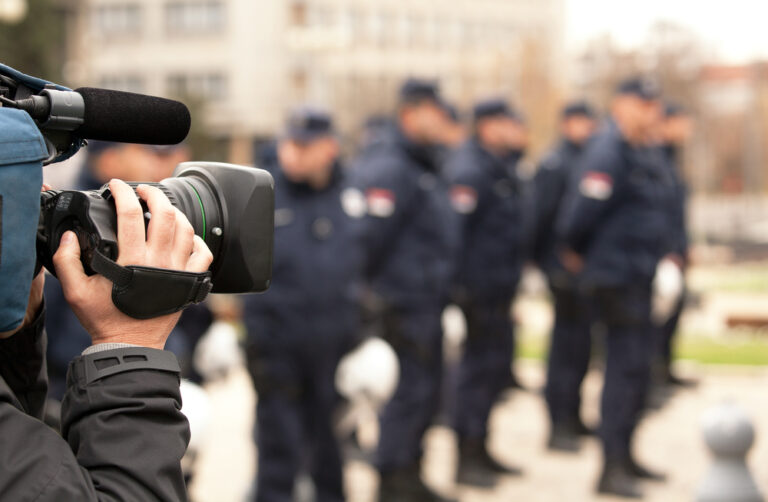
The police are called daily regarding various incidents of public interest. It is our responsibility to provide the…
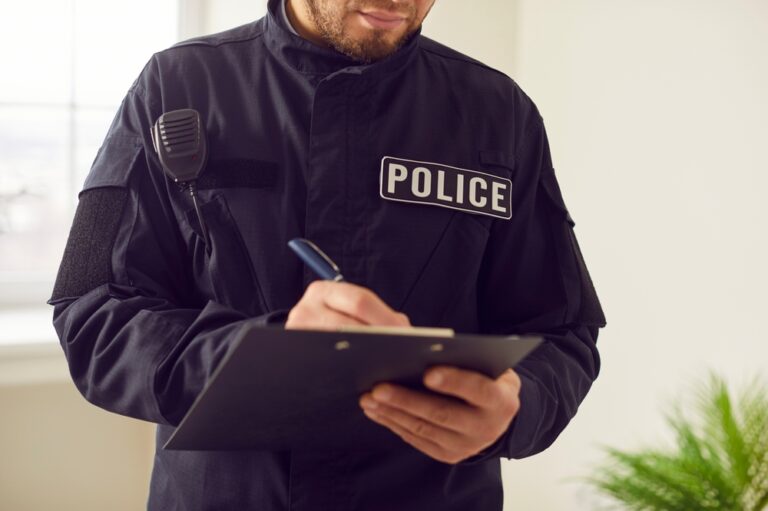
Many police officers experience terrible, traumatic events in the line of duty. A significant number of police officers…